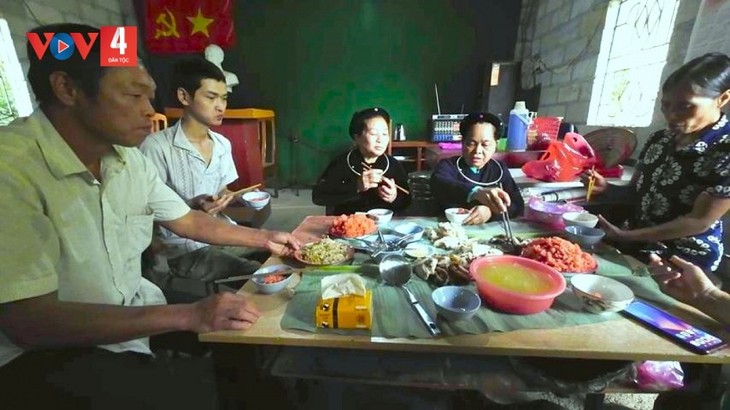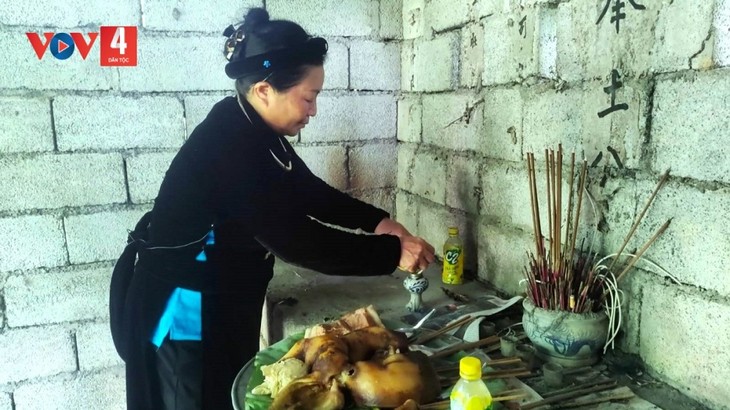(VOVWORLD) - In late April and early May of the lunar calendar, the Tay and Nung ethnic minority people in Cao Bang province conduct a good harvest ceremony to pray for favorable weather and a happy, prosperous life for every villager. The ceremony harmoniously combines culture, belief, and community solidarity.
 A good harvest ceremony is an opportunity for the Tay and Nung people to discuss business and production plans. (Photo: VOV) A good harvest ceremony is an opportunity for the Tay and Nung people to discuss business and production plans. (Photo: VOV) |
Ma Thi Hao, head of Tri Phuong hamlet in Quang Hoa district, and her villagers are busy preparing for their good harvest ceremony. Families are preparing dishes and home-made products to offer to the deities and tutelary gods.
Hao says that before the ceremony the villagers meet to choose the day for the ritual and decide who will prepare what kind of offering. Normally the ceremony is held in late April or early May of the lunar calendar on the day of the rooster. The rooster is a symbol of hard work and prosperity.
“All 40 households in the hamlet contribute money to buy offerings and food. On the day of the ceremony, every household sends a representative to attend the event.”
The ceremony is held in the afternoon at the temple of the village’s land genie. After burning incense and placing offerings on the altar, which include a pig head, pork, sticky rice, and liquor, the village patriarch asks the deities to bless the village with favorable weather, peace, and a bumper harvest.
The "Praying for a good harvest ceremony" must be organized in accordance with customs passed down through many generations.
 A Tay woman prepares the offering at the temple of the village's tutelary gods. (Photo: VOV) A Tay woman prepares the offering at the temple of the village's tutelary gods. (Photo: VOV) |
The ritual to petition the village tutelary and receive his answer is performed by tossing yin and yang coins three times: once to invite the village tutelary to the ceremony to enjoy the offerings; again to receive his blessing for good weather and a bumper crop; and a third time to see him off to heaven.
“We grow one rice crop per year and then we grow corn. Whether we have enough food for the whole year depends on the rice crop. Each year we must hold this ceremony. After worshipping the land genie, the villagers sit down to eat and discuss their business, and production plans,” said a villager named Phan Thi Anh.
It’s a custom of Tri Phuong hamlet that people attending the ceremony bring their own bowl and chopsticks and then clean up together when the ceremony ends.
“Every villager eagerly anticipates the ceremony because it’s an opportunity to learn from others how to grow high-yield rice and preserve culture,” said Nong Tien Duoc of Quang Hoa district.
After the ceremony, people perform unicorn dances and sing folk songs and men perform martial arts.
Cao Bang’s good harvest ceremony is a folk ritual that connects heaven with the human world, tightens solidarity between ethnic groups, and teaches young people about their traditions and roots.